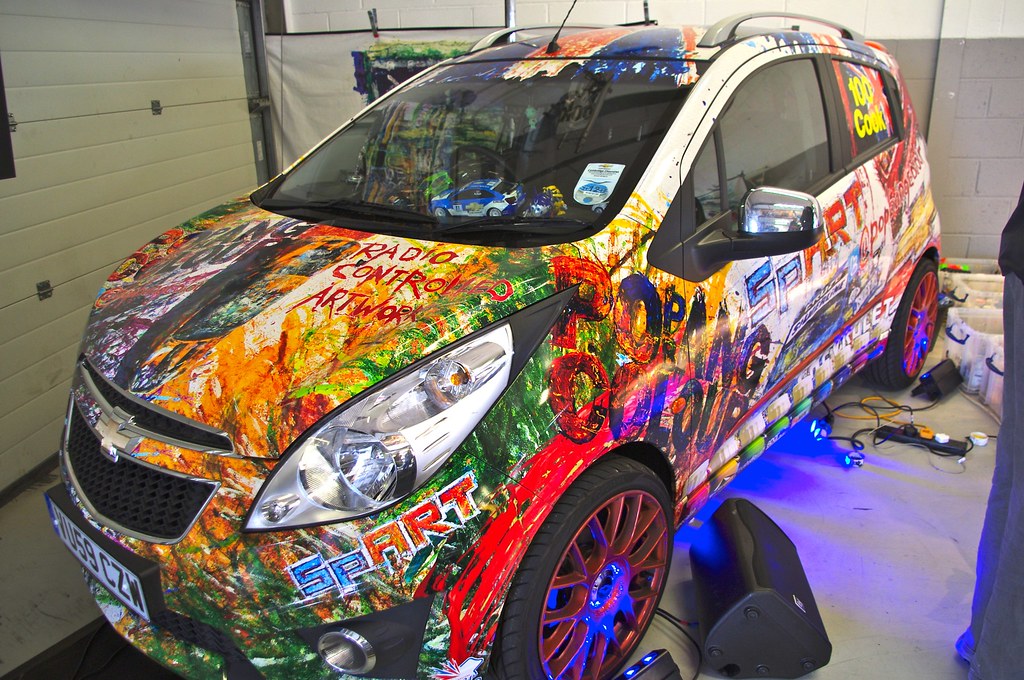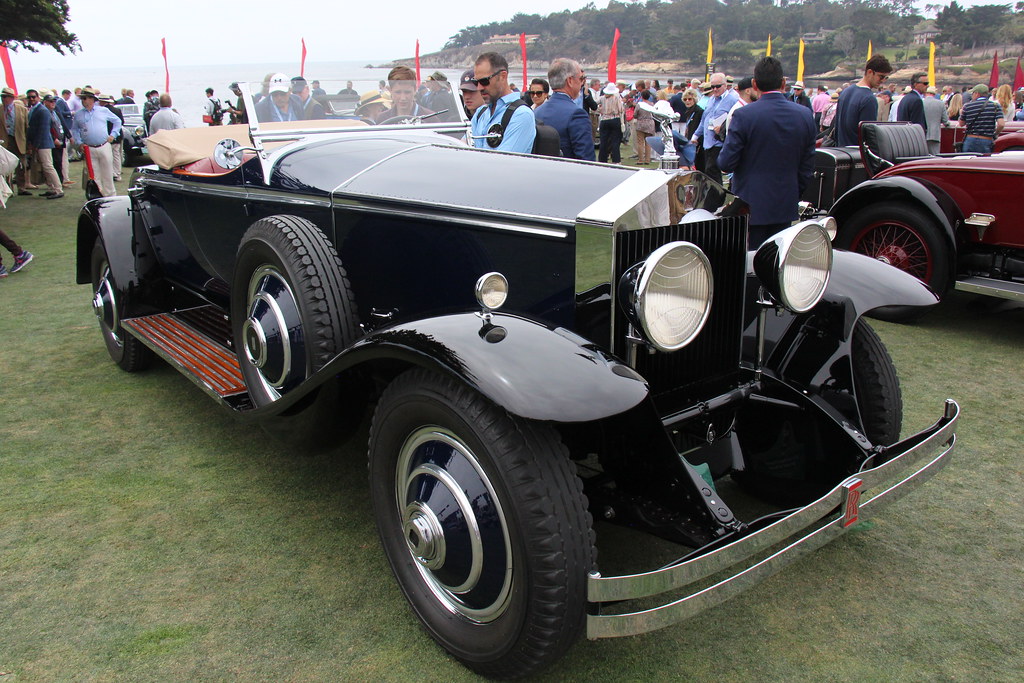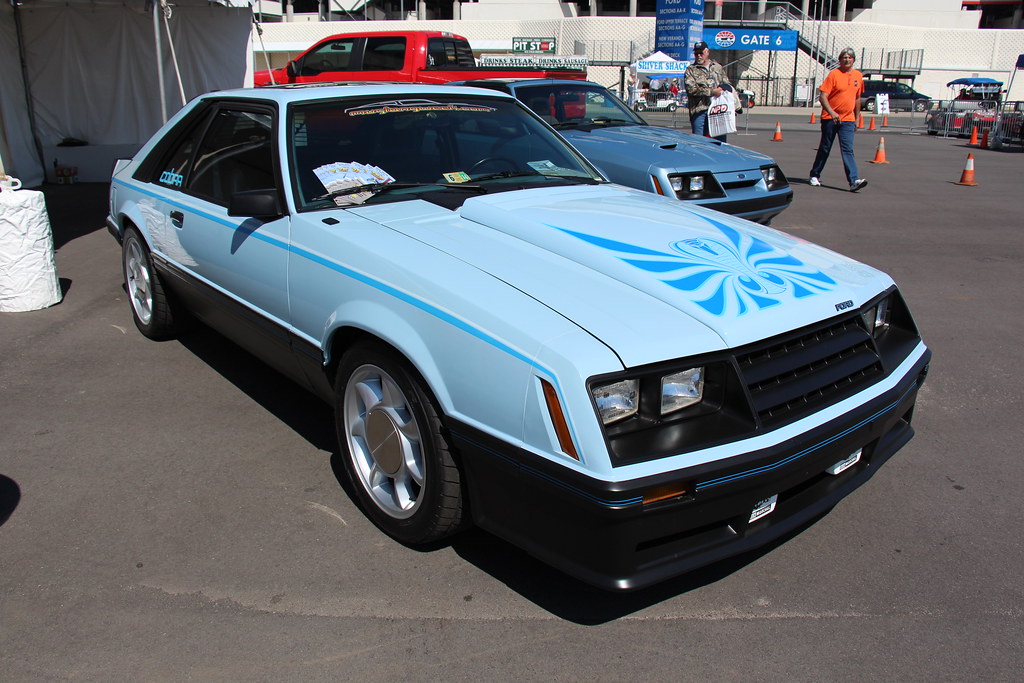
The allure of classic cars has long been a powerful force, captivating generations with their distinct designs, groundbreaking engineering, and the sheer thrill of a bygone era. For decades, the market was largely defined by the passions of baby boomers, who championed the chrome-laden cruisers of the 1950s, the raw power of 1960s muscle cars, and the elegant lines of post-war Americana. These vehicles, often revered for their historical significance and the memories they evoke, formed the bedrock of the classic car world, symbolizing freedom, innovation, and a golden age of automotive design.
However, as the wheels of time continue to turn, a fascinating evolution is unfolding within the enthusiast community. A new wave of collectors, primarily millennials and Generation Z, are entering the fray, bringing with them a fresh perspective and a different set of cherished memories. While they deeply respect the icons that came before, their formative years were shaped by the cars of the 1980s, 1990s, and early 2000s—vehicles often referred to as ‘youngtimers.’ These modern classics offer a compelling blend of nostalgic appeal and contemporary drivability, bridging the gap between analog purity and early digital sophistication. The question isn’t whether younger generations are interested in driving or vehicle ownership; studies have shown that 81% of millennial drivers said they ‘like,’ ‘love,’ or are ‘ passionate about’ driving.
This generational shift is not merely about replacing old favorites with new ones; it’s about expanding the very definition of what makes a car a ‘classic.’ It’s a dynamic interplay between enduring design, unique character, and the personal connections that bind us to these machines. From overlooked German coupes to underappreciated JDM machines, the vehicles now garnering increasing interest are those that offered bold designs, risked unconventional engineering, and provided a genuine driving enjoyment that transcends mere transportation. Let us embark on a journey through some of these emerging classics, exploring why they are poised to become the next icons for a new generation of discerning enthusiasts.

1. **Audi TT (8N)**When the original Audi TT made its grand entrance in 1998, it was nothing short of a design revelation, instantly setting itself apart from everything else on the asphalt. Its clean, Bauhaus-inspired lines and a remarkably minimalist interior were so faithful to its concept car predecessor that it immediately secured its place as an undeniable design icon. This car wasn’t just built; it was sculpted, presenting a visual statement that was both progressive and timeless, daring to challenge conventional automotive aesthetics.
Beneath its striking skin, the TT ingeniously leveraged components from the vast VW Group parts bin, a strategy that, far from being a drawback, contributed to its reliability and widespread appeal. The availability of Audi’s renowned Quattro all-wheel drive system, paired with a range of potent turbocharged engines, endowed the TT with real-world capability and engaging performance. While it might not have been conceived as a hardcore track monster, it certainly provided a spirited and capable driving experience, balancing everyday usability with genuine driver satisfaction.
Today, the first-generation TT is finally receiving the widespread recognition it always deserved, with its market values steadily climbing. This appreciation is particularly evident for well-maintained manual transmission variants and those equipped with the legendary Quattro system. Once considered merely a stylish commuter, it is now celebrated for its unique blend of form and function, embodying an era where design could still make a profound statement without compromising on dynamic integrity.
For enthusiasts looking to acquire a piece of automotive design history that is rapidly ascending to modern classic status, the 8N TT presents an exceptionally compelling opportunity. It’s more than just a pretty face; it’s a tangible representation of a pivotal moment in automotive design, offering an immersive driving experience that allows you to interact with a genuine icon on a daily basis. Its enduring appeal lies in its ability to captivate with both its visual artistry and its engaging road manners, making it a truly special addition to any collection.
Car Model Information: 2018 Audi TT 2.0T
Name: Audi TT
Caption: 2019 Audi TT Sport 40 TFSi
Manufacturer: Audi AG
Production: October 1998 – November 2023
ModelYears: 1999–2023
Assembly: Győr
Class: Sports car
BodyStyle: coupé
Layout: unbulleted list
Platform: Volkswagen Group A platform,Volkswagen Group MQB platform
Sp: uk
Categories: 2+2 coupés, 2000s cars, 2010s cars, 2020s cars, All-wheel-drive vehicles
Summary: The Audi TT is a production front-engine, 2-door, 2+2 sports coupé and roadster, manufactured and marketed by Audi from 1998 to 2023 across three generations.
For each of its three generations, the TT has been based on consecutive generations of Volkswagen’s “Group A” platforms, starting with its “PQ34” fourth generation. The TT shares powertrain and suspension layouts with its platform mates, including the Audi A3, like a transversely mounted front-engine, powering front-wheel drive or four-wheel drive, and fully independent suspension using MacPherson struts in front.
The TT’s first two generations were assembled by Audi’s Hungarian subsidiary, one of the world’s largest engine manufacturing plants, using bodyshells manufactured and painted at Audi’s Ingolstadt plant and parts made entirely by the Hungarian factory for the third generation.
The last of the 662,762 Audi TTs was manufactured in November 2023.
Get more information about: Audi TT
Buying a high-performing used car >>>
Brand: Audi Model: TT
Price: $21,980 Mileage: 110,607 mi.
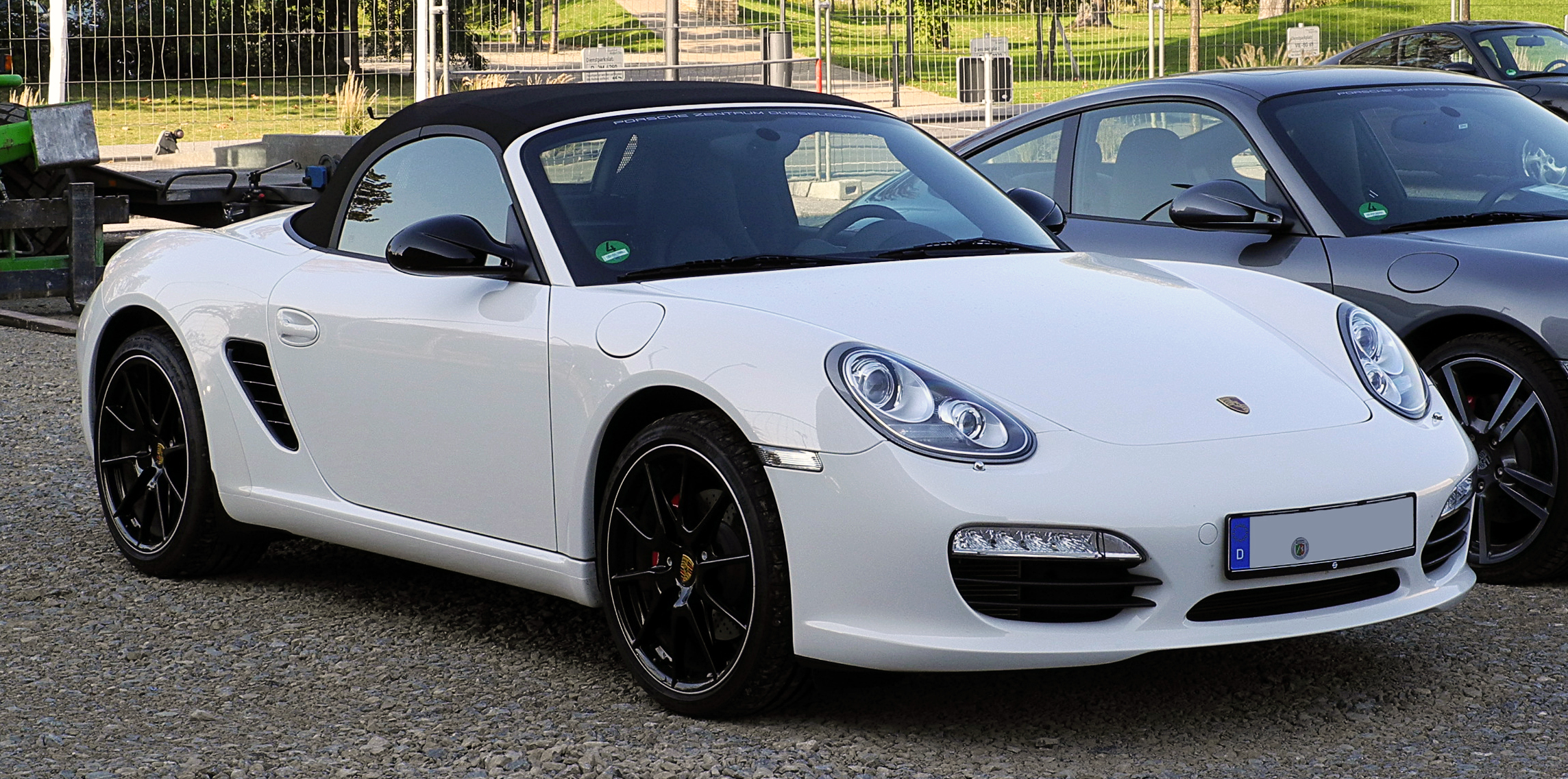
2. **Porsche Boxster (987)**The 987 generation of the Porsche Boxster represented a pivotal evolution for the brand’s entry-level roadster, signaling a substantial leap forward in sophistication and performance. Introduced in 2005, it brought with it a host of refinements, including cleaner, more elegant styling, a significantly more luxurious and ergonomic interior, and a suite of more powerful, yet equally engaging, engines. These enhancements collectively elevated the Boxster experience, solidifying its reputation as a serious contender in the sports car segment.
At its core, the 987 Boxster retained the impeccable mid-engine balance that had made its predecessor such a joy to drive, but it refined this characteristic to new levels of precision and responsiveness. This perfect weight distribution, coupled with a meticulously tuned chassis, resulted in superb dynamics that allowed the Boxster to carve through corners with an almost telepathic connection between driver and road. Furthermore, the 987 platform was instrumental in paving the way for the introduction of the first-ever Cayman, offering enthusiasts a hardtop alternative that shared the same brilliant chassis and dynamic prowess.
Despite its undeniable virtues and genuine Porsche pedigree, the 987 Boxster continues to fly somewhat under the radar, largely because it doesn’t bear the hallowed 911 badge. This curious oversight in the market, while puzzling to purists, works to the advantage of astute collectors and driving enthusiasts. It means that the 987 remains surprisingly affordable, presenting an exceptional value proposition when one considers its capabilities and the unparalleled driving experience it delivers—an experience arguably among the best-handling Porsches ever made.
As the values of older 911 models, and even early Caymans, continue their inexorable climb, the 987 Boxster stands out as an exceptionally intelligent acquisition for drivers who crave authentic Porsche thrills without the prohibitive collector tax. It’s a testament to Stuttgart’s engineering prowess, offering a pure, unadulterated sports car experience that is becoming increasingly rare. The wise enthusiast would do well to consider this exquisite roadster before its well-deserved recognition inevitably leads to an upward revaluation of its market price.
Car Model Information: 2014 Porsche Boxster Base
Name: unbulleted list
Caption: Porsche Boxster Spyder (718)
Manufacturer: Porsche
Aka: unbulleted list
Production: unbulleted list
Assembly: unbulleted list
Class: Sports car
BodyStyle: unbulleted list
Related: unbulleted list
Layout: Rear mid-engine, rear-wheel drive layout
Predecessor: Porsche 968
Categories: All Wikipedia articles written in British English, All articles needing additional references, All articles with dead external links, All articles with unsourced statements, Articles needing additional references from August 2025
Summary: The Porsche Boxster and Cayman are mid-engine two-seater sports cars manufactured and marketed by German automobile manufacturer Porsche across four generations—as a two-door, two-seater roadster (Boxster) and a three-door, two-seater fastback coupé (Cayman).
The first generation Boxster was introduced in 1996; the second generation Boxster and the Cayman arrived in late 2005; and the third generation launched in 2012. Since the introduction of the fourth generation in 2016, the two models have been marketed as the Porsche 718 Boxster and Porsche 718 Cayman.
The nameplate Boxster is a portmanteau of boxer, a reference to its flat or boxer engine, and Speedster, a nod to the original Porsche Speedster of the 1950’s. The nameplate Cayman is an alternative spelling of caiman, a member of the alligator family.
In May 2025 Porsche North America confirmed the rumours that global “production for all current 718 Boxster and 718 Cayman variants, including RS models, is scheduled to end in October of” 2025. Porsche CEO Oliver Blume has confirmed future production of full-electric replacements but said they will arrive in the “medium term.”
Get more information about: Porsche Boxster and Cayman
Buying a high-performing used car >>>
Brand: Porsche Model: Boxster
Price: $33,975 Mileage: 64,592 mi.
Read more about: Unlocking Automotive Excellence: Your Expert Guide to 8 Top Used Porsche Models
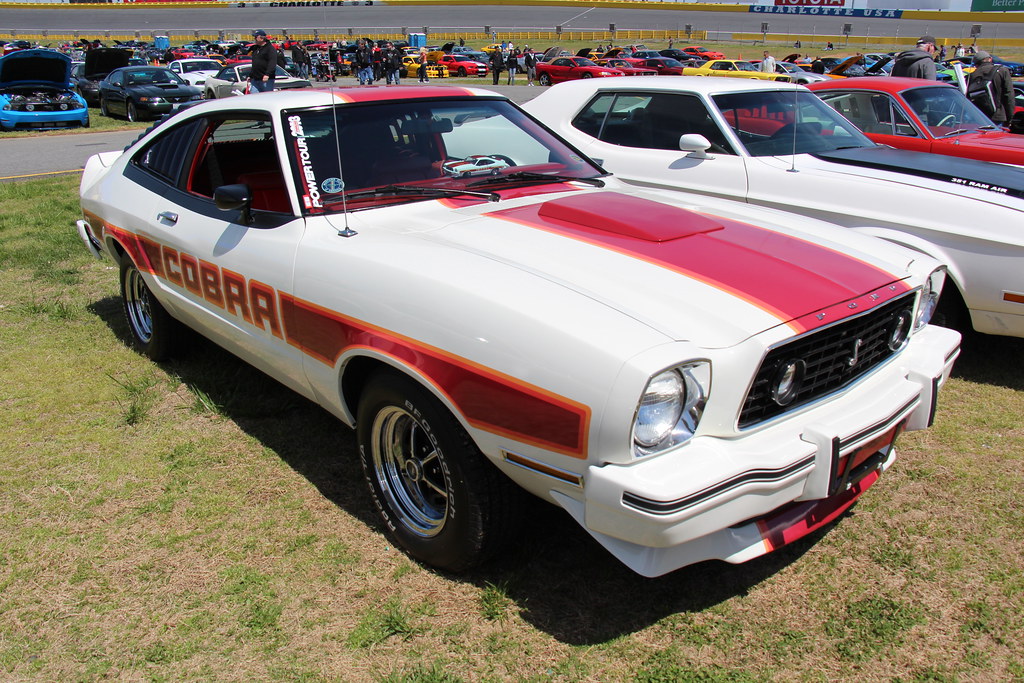
3. **Ford Mustang (Fox Body)**The Fox Body Mustang entered the automotive arena with a daunting task: to revitalize a legendary nameplate that had, in its Mustang II iteration, somewhat lost its way. Launched in 1979 on an entirely new, lighter platform, this generation slowly but surely began to re-establish the Mustang’s credentials as a bona fide performance machine. It was a gradual evolution, with each subsequent model year bringing incremental improvements that collectively transformed it from a practical compact into a formidable V8-powered icon.
Throughout its impressive 14-year production run, the Fox Body matured significantly, particularly in its later years. The introduction of the potent 5.0-liter V8 engines, along with the distinct GT trims and the more exclusive Cobra editions, cemented its reputation for raw American horsepower and accessible performance. These models, in particular, captured the hearts of a generation, becoming symbols of drag strip prowess and affordable street credibility. The blend of a lightweight chassis and a powerful engine created a car that was eminently tunable and incredibly rewarding to drive.
For a time, the Fox Body Mustang was perhaps unfairly dismissed by some as merely dated or a dime a dozen, overshadowed by newer, more technologically advanced competitors. However, the tides have unequivocally turned. This often-underestimated generation is now garnering substantial respect among both seasoned collectors and dedicated drag racers, who appreciate its robust architecture and its undeniable potential for customization and speed. Indeed, the rare factory T-top models, with their removable roof panels, unequivocally crank the retro cool factor up to an exhilarating 11, evoking a distinct and beloved 1980s aesthetic.
While values for pristine V8-powered Fox Bodies, especially those equipped with the coveted factory T-tops, are steadily climbing, smart deals can still be found for those willing to search. Whether your automotive passion leans towards conquering the quarter mile, cruising with undeniable 1980s flair, or simply owning a significant piece of Mustang history, this is undeniably a generation worth acquiring. It’s a powerful, adaptable, and increasingly appreciated classic that is rapidly heading towards becoming the next highly sought-after auction darling, making now an opportune moment to stake your claim.
Car Model Information: 2022 Ford Mustang Mach 1 Fastback
Name: Ford Mustang
Caption: 2018 Ford Mustang GT 5.0
Aka: Ford T5 (Germany)
Manufacturer: Ford Motor Company
Production: March 1964 – present
ModelYears: 1965–present
Class: Unbulleted list
BodyStyle: Unbulleted list
Layout: Front-engine, rear-wheel-drive layout
Categories: 1970s cars, 1980s cars, 1990s cars, 2+2 coupés, 2000s cars
Summary: The Ford Mustang is an American automobile manufactured and marketed by Ford since 1964, as Ford’s longest nameplate in continuous production. Currently in its seventh generation, it is the fifth-best selling Ford car nameplate. The namesake of the “pony car” automobile segment, the Mustang was developed as a highly styled line of sporty coupes and convertibles derived from existing model lines, initially distinguished by its pronounced “long hood, short deck” proportions.
Originally predicted to sell 100,000 vehicles yearly, the 1965 Mustang became the most successful vehicle launch since the 1927 Model A. Introduced on April 17, 1964 (16 days after the Plymouth Barracuda), over 400,000 units were sold in its first year; the one-millionth Mustang was sold within two years of its launch. In August 2018, Ford produced the 10-millionth Mustang; matching the first 1965 Mustang, the vehicle was a 2019 Wimbledon White convertible with a V8 engine.
The success of the Mustang launch led to multiple competitors from other American manufacturers, including the Chevrolet Camaro and Pontiac Firebird (1967), AMC Javelin (1968), and Dodge Challenger (1970). It also competed with the Plymouth Barracuda, which was launched around the same time. The Mustang also had an effect on designs of coupes worldwide, leading to the marketing of the Toyota Celica and Ford Capri in the United States (the latter, by Lincoln-Mercury). The Mercury Cougar was launched in 1967 as a unique-bodied higher-trim alternative to the Mustang; during the 1970s, it included more features and was marketed as a personal luxury car.
From 1965 until 2004, the Mustang shared chassis commonality with other Ford model lines, staying rear-wheel-drive throughout its production. From 1965 to 1973, the Mustang was derived from the 1960 Ford Falcon compact. From 1974 until 1978, the Mustang (denoted Mustang II) was a longer-wheelbase version of the Ford Pinto. From 1979 until 2004, the Mustang shared its Fox platform chassis with 14 other Ford vehicles (becoming the final one to use the Fox architecture). Since 2005, Ford has produced two generations of the Mustang, each using a distinct platform unique to the model line.
Through its production, multiple nameplates have been associated with the Ford Mustang series, including GT, Mach 1, Boss 302/429, Cobra (separate from Shelby Cobra), and Bullitt, along with “5.0” fender badging (denoting 4.9 L OHV or 5.0 L DOHC V8 engines).
Get more information about: Ford Mustang
Buying a high-performing used car >>>
Brand: Ford Model: Mustang
Price: $54,997 Mileage: 6,499 mi.
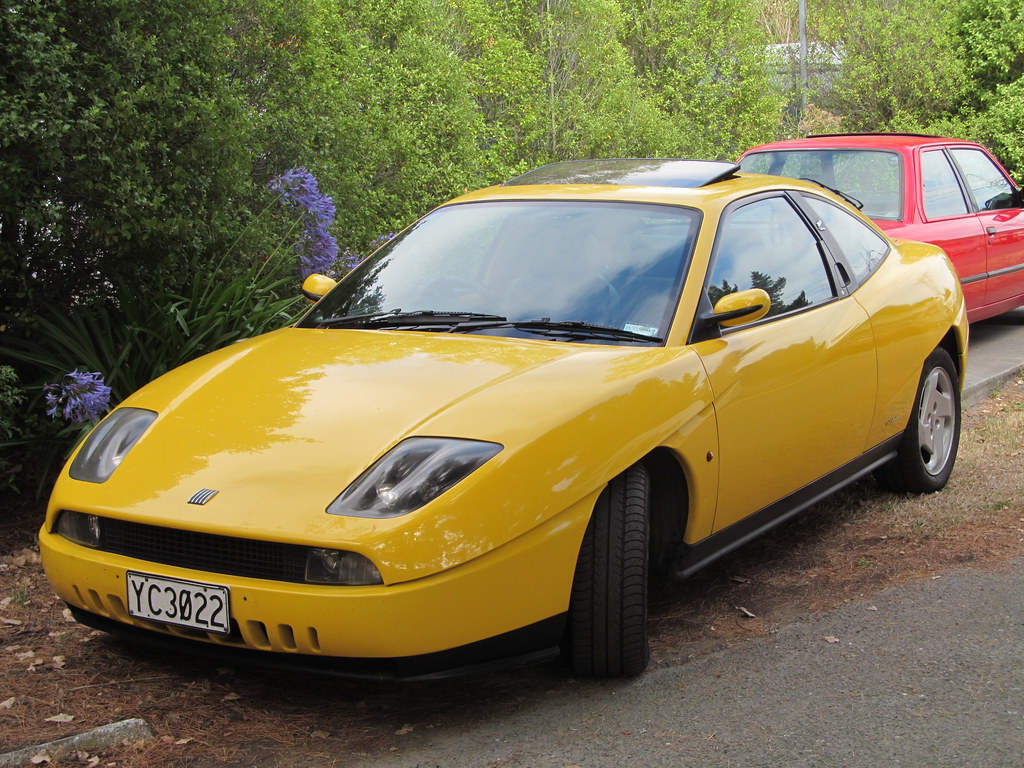
4. **Fiat Coupe**For those whose classic car tastes lean towards the avant-garde, defined by sharp lines and an undeniable dose of Italian flair, the Fiat Coupe from the 1990s stands as one of the era’s most profoundly underappreciated sports cars. Penned by Chris Bangle before his controversial and influential tenure at BMW, its design was so audacious that it appeared to have materialized directly from a concept car display onto public roads. The Coupe’s aesthetic was a bold declaration, proving that even a mainstream brand could produce something truly extraordinary and visually arresting.
What truly made the Fiat Coupe a visual spectacle were its distinctive and idiosyncratic styling elements. The car featured unique porthole taillights, a dramatically sculpted beltline that cut deep into the bodywork, and an interior bursting with vibrant color and a tangible sense of personality. This combination transcended typical automotive design, leading many to liken it to a smaller, more accessible Ferrari. It radiated an exotic aura, presenting itself as a budget Lancia Delta Integrale or a front-wheel-drive homage to more illustrious Italian marques, captivating onlookers with its unique presence.
Beneath its flamboyant exterior, the Fiat Coupe may have shared its fundamental underpinnings with the humble Fiat Tipo economy car, but this shared lineage belied its performance capabilities. Particularly in its turbocharged 20V five-cylinder guise, the Coupe delivered a surprisingly potent driving experience. The five-cylinder engine produced a distinctive and sonorous exhaust note, perfectly complementing its wild looks with a soundtrack that was as engaging as its acceleration. It was a vehicle that confidently backed up its striking appearance with genuine sporting credentials.
Now, with early models legally eligible for import into the United States under the 25-year rule, the Fiat Coupe is poised to capture the imagination of American enthusiasts. This offbeat European coupe possesses an undeniable ability to stand out at any car gathering, drawing admiring glances and sparking conversations. Its reasonable price point, for now, offers an accessible entry into exclusive Italian design and turbocharged thrills, but this window of opportunity, like all good things, is unlikely to remain open indefinitely. It represents a rare chance to own a truly distinctive and emotionally resonant piece of automotive art.
Car Model Information: 2012 FIAT 500 Pop
Alt: Front-three-quarter view of a two-door car with alloy wheels and door mirrors
Name: Fiat Coupé
Aka: Coupé Fiat
Manufacturer: Fiat
Assembly: Turin, Italy
Production: 1993–2000
Predecessor: Fiat 124 Sport Coupé,Fiat 128#128 Coupé and 3P
Layout: FF layout
Class: Sports car
Platform: Fiat Tipo Due platform
BodyStyle: coupé
Engine: ubl
Transmission: Manual transmission
Wheelbase: Convert
Length: Convert
Width: Convert
Height: Convert
Weight: Convert
Related: Fiat Tipo (Type 160)
Designer: Chris Bangle
Caption: 1999 Fiat Coupé 20V Turbo
Categories: 2000s cars, All articles needing additional references, All articles with unsourced statements, Articles needing additional references from March 2023, Articles with short description
Summary: The Fiat Coupé (Type 175), officially also known as Coupé Fiat, is a car that was manufactured by Fiat between 1993 and 2000. The two-door, four-seater coupé was introduced at the Bologna Motor Show in December 1993 and features an exterior design by Chris Bangle at Centro Stile Fiat and an interior designed by Pininfarina.
Get more information about: Fiat Coupé
Buying a high-performing used car >>>
Brand: Fiat Model: Coupe
Price: $5,945 Mileage: 83,474 mi.
Read more about: Unearthing Hidden Performance: 14 Underrated Sports Cars That Defy Expectations for Today’s Performance Seekers

5. **Volkswagen Corrado**The Volkswagen Corrado, a car that perhaps never achieved the mainstream success its innovative spirit deserved, paradoxically finds itself more interesting today precisely for that reason. Conceived and built on a clever amalgamation of components from the VW Golf and Passat, the Corrado aimed significantly higher than its platform siblings. It was designed with a more aggressive styling ethos, engineered for sharper, more engaging handling characteristics, and offered a powertrain lineup that included options far beyond the typical compact car, making it a truly unique offering in Volkswagen’s history.
At the heart of the Corrado’s appeal were its distinctive engine choices, most notably the supercharged G60 unit and the now-iconic VR6. The VR6 engine, in particular, endowed the Corrado with a formidable punch and, critically, one of the most distinctive and beloved engine notes of its era—a deep, resonant growl that hinted at its underlying power. This unique engine, combined with a driver-focused cockpit, a taut and responsive chassis, and a delightful dash of undeniable Euro weirdness, forged a reputation for the Corrado as one of the coolest and most underrated sleepers of the 1990s.
For a long period, the Corrado remained a niche car, appreciated primarily by a dedicated few. However, discerning enthusiasts are increasingly recognizing its merits, and clean VR6 models are slowly but surely beginning to appreciate in value. Despite this upward trend, it remains an accessible performance coupe, with many examples still available for well under $20,000. This affordability, coupled with its unique character, makes it an attractive proposition for those seeking something truly distinctive and engaging.
For Volkswagen loyalists or anyone yearning for an automotive experience that stands apart from the conventional, the Corrado is finally beginning to receive the widespread love and admiration it warranted from the very moment it rolled off the production line. Its blend of quirky design, surprising performance, and exceptional driving dynamics solidifies its place as a compelling emerging classic, offering a unique blend of practicality and passion that is hard to find in today’s market. It’s a testament to Volkswagen’s ability to create something truly special when they dared to color outside the lines.
Car Model Information: 1992 Volkswagen Corrado SLC
Name: Volkswagen Corrado
Manufacturer: Volkswagen
Production: 1988–1995
Assembly: Osnabrück
Class: Sport compact
BodyStyle: 2+2 (car body style),coupé
Layout: Front-engine, front-wheel-drive layout
Platform: Volkswagen Group A platform#A2
Engine: ubl
Transmission: Manual transmission
Wheelbase: 97.3 in
Abbr: on
Order: flip
Length: 159.4 in
Width: 65.9 in
Height: 51.57 in
Weight: convert
Related: Volkswagen Golf Mk2,Volkswagen Jetta
Designer: Herbert Schäfer
Predecessor: Volkswagen Scirocco#Second generation (1981–1992)
Successor: Volkswagen Scirocco#Third generation (2008–2017)
Categories: 1990s cars, All articles needing additional references, All articles with unsourced statements, Articles needing additional references from March 2012, Articles with short description
Summary: The Volkswagen Corrado is a compact four passenger (2+2), three door, front-engine, front-wheel-drive liftback coupe marketed by Volkswagen from 1988 until 1995, and manufactured by Karmann in Osnabrück, Germany.
Designed by Herbert Schäfer, the Corrado overlapped and eventually superseded Volkswagen’s Scirocco model. 97,521 Corrados were manufactured over the seven year production run; about 50,000 of them were sold in the United States.
Get more information about: Volkswagen Corrado
Buying a high-performing used car >>>
Brand: Volkswagen Model: Corrado
Price: $9,000 Mileage: 143,900 mi.
Read more about: Rare Cars of the 1980s: Icons of Performance Innovation and Style

6. **BMW Z3 Coupe**The BMW Z3 Coupe has always possessed a distinctive charm, often existing comfortably in the shadow of its more celebrated sibling, the Z3 M Coupe. Yet, this very position is integral to its enduring appeal and makes it a compelling prospect for those seeking something genuinely different. With its undeniably oddball shooting brake styling, a feature that either captivates or perplexes, and a range of wonderfully smooth inline-six engines, the non-M Z3 Coupe delivers a significant portion of its sibling’s charisma and driving engagement, all at a considerably more accessible price point.
This lightweight, rear-wheel-drive machine offers a truly raw and analog driving experience, a purity that is becoming increasingly scarce in a world dominated by digital interfaces and electronic assists. It’s a direct, visceral connection between driver and road, making every journey an engaging event. The Z3 Coupe feels nimble, responsive, and wonderfully balanced, embodying a driving ethos that prioritizes feedback and enjoyment over outright speed, appealing deeply to those who cherish the art of driving.
Thanks to its polarizing yet memorable design, the Z3 Coupe has, over time, cultivated a dedicated cult following among BMW enthusiasts and collectors who are drawn to its individuality and unique character. This discerning group recognizes the blend of BMW’s legendary straight-six performance and the car’s distinctive aesthetic, which sets it apart from more conventional offerings. It’s a vehicle that sparks conversation and commands attention precisely because it dares to be different, standing as a testament to daring automotive design.
As values for the more aggressive M Coupe variants continue their seemingly unstoppable ascent, the regular Z3 Coupe is quietly, but steadily, climbing in market appreciation, particularly for coveted six-cylinder manual transmission examples. For the astute enthusiast, it presents itself as one of the smartest acquisitions in the used BMW market, offering a blend of rarity, engaging performance, and undeniable character that promises not only driving pleasure but also a strong likelihood of future appreciation.
Car Model Information: 2020 Audi Q5 45 Premium Plus
Name: BMW Z3
Production: September 1995–June 2002
Assembly: Greer, South Carolina
Class: Sports car
BodyStyle: roadster (automobile),shooting-brake
Related: BMW 3 Series (E36)
Layout: Front-engine, rear-wheel-drive layout
Engine: Petrol:,BMW M43#M43B18,BMW M52,BMW M50#S50B32
Transmission: unbulleted list
Wheelbase: 2446 mm
Abbr: on
Length: 4025 mm
Width: 1692 mm
Height: convert
Weight: convert
Predecessor: BMW Z1
Successor: BMW Z4 (E85)
Manufacturer: BMW
Designer: Joji Nagashima
ModelYears: 1996–2002
Categories: 2000s cars, Articles with short description, BMW vehicles, CS1 German-language sources (de), Cars discontinued in 2002
Summary: The BMW Z3 is a range of two-seater sports cars which was produced from 1995 to 2002. The body styles of the range are:
2-door roadster (E36/7 model code)
2-door coupé (E36/8 model code)
The Z3 was based on the E36/5 compact platform, a shortened version of the conventional E36 platform. This smaller and cheaper platform used the rear semi-trailing arm suspension design from the older E30 3 Series. It is the first mass-produced Z Series car.
M models were introduced in 1998 in roadster and coupé body styles and were powered by the S50, S52, or S54 straight-six engine depending on country and model year. The M models came with a 5-speed manual transmission. The regular Z3s were offered with straight-sixes or four-cylinder engines.
Production ended on June 28, 2002, with the Z3 line replaced by the E85 Z4.
Get more information about: BMW Z3
Buying a high-performing used car >>>
Brand: BMW Model: Z3 Coupe
Price: $19,186 Mileage: 85,936 mi.
Read more about: Unearthing Hidden Performance: 14 Underrated Sports Cars That Defy Expectations for Today’s Performance Seekers
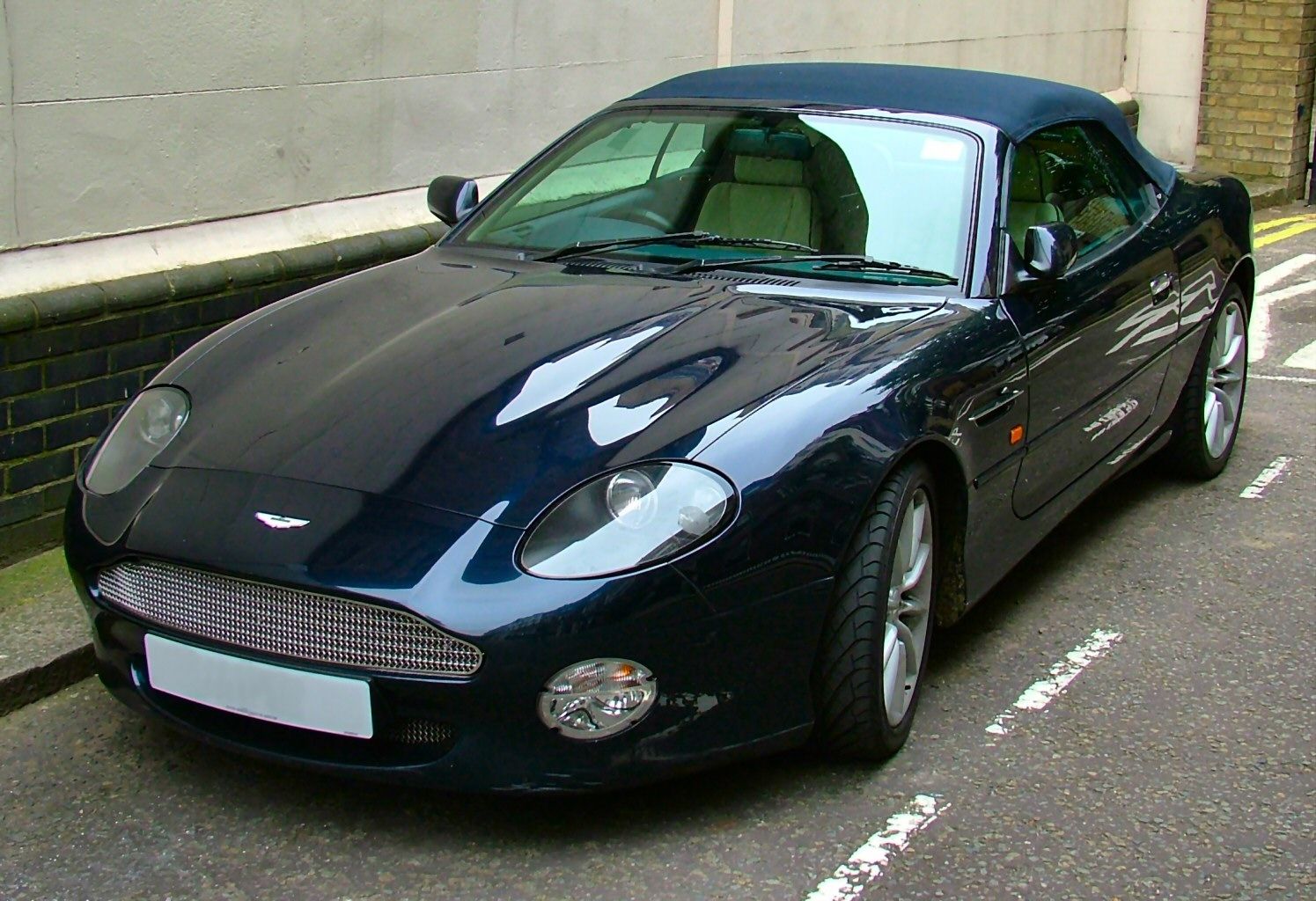
7. **Aston Martin DB7 Vantage**Often overshadowed by its newer, more technologically advanced successors and surprisingly overlooked by many outside the dedicated British car scene, the Aston Martin DB7 Vantage stands as a breathtaking testament to the fusion of old-world styling and contemporary performance. Penned by the legendary Ian Callum, its design was so exquisitely executed that it earned the effusive praise of automotive critics like Jeremy Clarkson, who declared it one of the most beautiful cars ever built. The DB7 Vantage masterfully blends elegant, flowing proportions with a serious grand touring presence, creating an automobile that is both timeless and commanding.
Underneath its sculpted hood, the Vantage models marked a pivotal moment for Aston Martin, as they eschewed the earlier inline-six engine in favor of a magnificent 5.9-liter V12. This engine wasn’t just a power upgrade; it heralded the beginning of Aston Martin’s now-iconic V12 powertrain lineage, delivering over 400 horsepower with a captivating exhaust note that transforms every drive into a special occasion. While not conceived as a lightweight sports car, the DB7 Vantage excels as a luxurious grand tourer, effortlessly covering vast distances in sophisticated style and with exhilarating pace.
For an extended period, the DB7 Vantage remained surprisingly affordable in the used market, largely due to a combination of limited general enthusiasm and the pervasive, often exaggerated, fears associated with the maintenance costs of British luxury vehicles. However, this window of opportunity, allowing enthusiasts to acquire a V12-powered Aston Martin for the price of a mid-range performance sedan, is rapidly closing. As newer Aston Martin models continue their upward trajectory in value, the DB7 Vantage represents what might be the last truly accessible V12 grand tourer on the market, offering unparalleled luxury and performance for its price point.
This is a car that embodies automotive passion, combining a rich heritage with a truly captivating driving experience. Its status as an undervalued gem is a testament to its quiet elegance and formidable capabilities, making it an increasingly attractive option for those who recognize its intrinsic worth. Acquiring a DB7 Vantage now is not just buying a car; it’s investing in a piece of automotive artistry that is poised for a significant re-evaluation of its market position.
Car Model Information: 2020 Audi Q5 45 Premium Plus
Name: Aston Martin DB7
Caption: Aston Martin DB7 V12 Vantage
Manufacturer: Aston Martin
ModelCode: XX
ModelYears: 1994–1999 (United States & Canada for I6 Model),1999–2003 (United States & Canada for Vantage Models)
Production: September 1994 – December 2004,(7,000 produced)
Assembly: Bloxham,Oxfordshire
Predecessor: Aston Martin DB6
Successor: Aston Martin DB9
Class: Grand tourer
BodyStyle: coupé
Layout: Mid-engine design
Platform: Jaguar XJS
Related: Jaguar XK (X100)
Engine: Jaguar AJ6 engine#3.2 (1990–1994),supercharged,Straight-six engine
Transmission: GM 4L80-E transmission,Magna PT#Longitudinal orientation,ZF 5HP30 transmission,Borg-Warner T-56 transmission
Wheelbase: 2591 mm
Abbr: on (Volante)
Length: 4646 mm
Width: 1830 mm
Height: 1268 mm
Weight: {{convert,1825,kg,lb,abbr=on
Designer: Ian Callum,Keith Helfet
Sp: uk
Categories: 2000s cars, All Wikipedia articles written in British English, Articles with short description, Aston Martin vehicles, Cars discontinued in 2004
Summary: The Aston Martin DB7 is a car that was produced by British luxury car manufacturer Aston Martin from September 1994 to December 2004. It was designed by Ian Callum and Keith Helfet as a grand tourer in coupé and convertible bodystyles. The prototype was complete by November 1992 and debuted at the Geneva Motor Show in March 1993. The six-cylinder DB7 (based on the Jaguar AJ6 engine) was positioned as an “entry-level” model below the hand-built V8 Virage introduced a few years earlier. At the time, the DB7 was the most-produced Aston Martin automobile in the company’s history, with more than 7,000 built before it was replaced by the DB9 in 2004.
Get more information about: Aston Martin DB7
Buying a high-performing used car >>>
Brand: Aston Martin Model: DB7 Vantage
Price: $19,186 Mileage: 85,936 mi.
Read more about: Smart Wheels, Golden Years: 14 Cars Middle-Class Retirees Must Steer Clear Of to Protect Their Nest Egg

8. **Porsche 911 (996)**The 996 generation of the Porsche 911 was a true disruptor, bravely breaking with several long-standing Porsche traditions and, in doing so, creating a significant divide within its loyal fanbase. As the first water-cooled 911, it represented a radical departure from the revered air-cooled heritage, and its distinctive “fried egg” headlights and radically different styling earned it a considerable amount of criticism from purists upon its introduction. For years, this model was considered the black sheep of the 911 family, struggling to gain the same reverence as its predecessors and successors.
However, as the passage of time often reveals the true character of innovative design, the automotive world is finally starting to be kind to the 996 era. When one looks past the initial purist gripes and stylistic controversies, a true and unadulterated 911 experience emerges: the iconic rear-engine layout, the precisely sharp handling, the unmistakable flat-six power, and an overall level of driver engagement that is inherently Porsche. Early models, in particular, offered a more analog connection, featuring a cable throttle and a narrow body that imbued them with a surprisingly old-school feel, an aspect often overlooked.
Compared to the stratospheric prices now commanded by air-cooled 911s and even many newer models, the 996 stands out as a remarkable bargain, offering an accessible entry point into the legendary 911 ownership experience. While it may never become the brand’s quintessential poster child, its historical significance cannot be overstated; it was the innovative platform that laid the groundwork for the modern 911, ensuring the lineage continued into the new millennium.
For discerning enthusiasts and aspiring collectors, the 996 represents one of the last genuine deals within Porsche’s storied lineup. It offers a pure driving experience, a compelling blend of tradition and modernity, and the undeniable prestige of the Porsche crest, all at a price that remains surprisingly within reach. Smart buyers are recognizing that this is a fleeting opportunity to own a pivotal piece of Porsche history before its well-deserved appreciation inevitably pushes its values higher.
Car Model Information: 2021 Porsche 911
Name: Porsche 911
Caption: The 1 millionth 911 produced on display at Volkswagen Group Forum, Berlin
Designer: Ferdinand Alexander Porsche
Manufacturer: Porsche
Production: September 1964 – present
Assembly: Stuttgart,Baden-Württemberg
Class: Sports car
BodyStyle: unbulleted list
Related: unbulleted list
Layout: Rear-engine design,rear-wheel drive
Predecessor: Porsche 356
Categories: 1970s cars, 1980s cars, 1990s cars, 2+2 coupés, 2000s cars
Summary: The Porsche 911 model series (pronounced Nine Eleven or in German: Neunelf) is a family of German two-door, high performance rear-engine sports cars, introduced in September 1964 by Porsche AG of Stuttgart, Germany, and now in its eighth generation. All 911s have a rear-mounted flat-six engine, and usually 2+2 seating, except for special 2-seater variants. Originally, 911s had air-cooled engines, and torsion bar suspension, but the 911 has been continuously enhanced, and evolved across generations. Though the 911 core concept has remained largely unchanged, water-cooled engines were introduced with the 996 series in 1998, and front and rear suspension have been replaced by Porsche-specific MacPherson suspension up front, and independent multi-link rear suspension.
The 911 has been raced extensively by private and factory teams, in a variety of classes. It is among the most successful competition cars. In the mid-1970s, the naturally aspirated 911 Carrera RSR won world championship races including Targa Florio and the 24 Hours of Daytona. The 911-derived 935 turbo also won the 24 Hours of Le Mans in 1979. Porsche won the World Championship for Makes in 1976, 1977, 1978, and 1979 with 911-derived models.
In a 1999 poll to determine the Car of the Century, the 911 ranked fifth — one of two in the top five that had remained continuously in production (the original Beetle remained in production until 2003). The one millionth example was manufactured in May 2017 and is in the company’s permanent collection.
Get more information about: Porsche 911
Buying a high-performing used car >>>
Brand: Porsche Model: 911
Price: $126,995 Mileage: 8,629 mi.
Read more about: The Real Cost of Speed: 14 Sports Cars & What Financial Experts REALLY Think About Your Investment
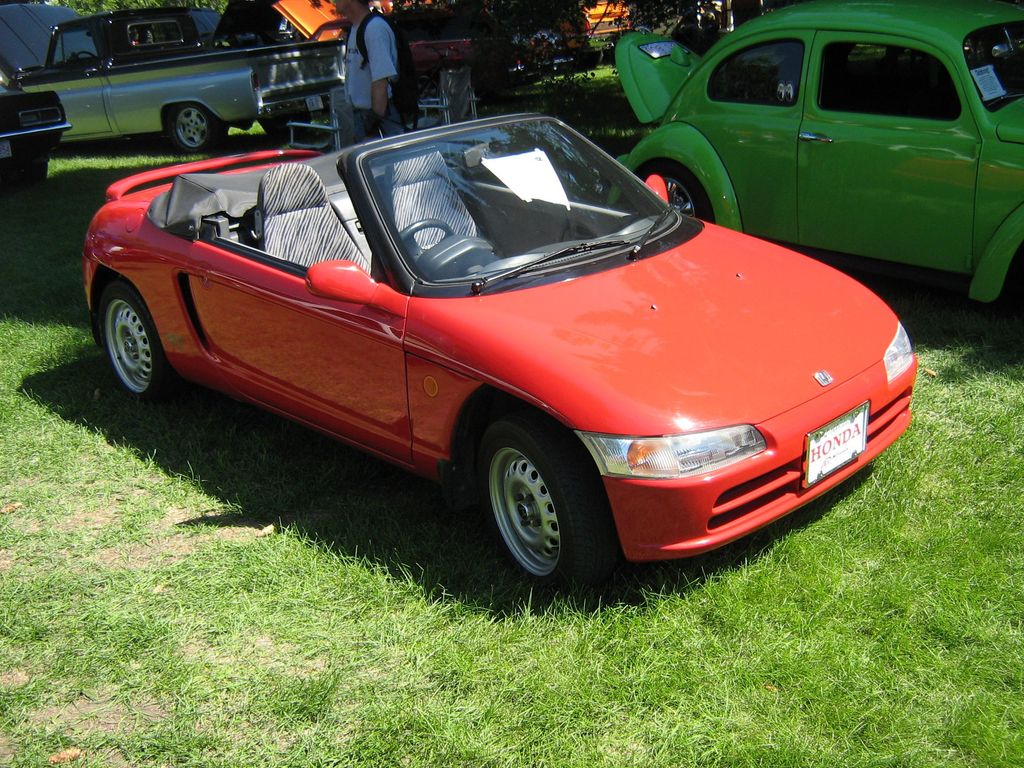
9. **Honda Beat**In a world where many coveted JDM sports cars have either reached astronomical values or, sadly, been driven into the ground, the Honda Beat represents a fascinating anomaly. This diminutive machine managed to avoid both fates for years, largely because its utterly charming combination of small size, delightful weirdness, and engineering brilliance allowed it to slip under the radar of mainstream enthusiasts. It’s a car that encapsulates the spirit of Japanese automotive innovation in a wonderfully compact package.
Designed with meticulous precision to comply with Japan’s restrictive kei car regulations, the Beat is a mid-engine, rear-wheel-drive roadster powered by a tiny yet mighty 660cc three-cylinder engine. What truly sets this powerplant apart is its incredible ability to rev all the way to a screaming 9,000 rpm, delivering an exhilarating, motorcycle-like soundtrack and an engaging, high-strung driving character. It shares a unique niche with other micro-sports cars like the Suzuki Cappuccino and Autozam AZ-1, but the Beat distinguishes itself with Honda’s renowned reliability and a particularly pure, unadulterated roadster feel that prioritizes driver involvement.
If one were to squint, they might perceive the Honda Beat as a delightful, scale-model interpretation of an NSX—sharing that iconic mid-engine layout, rear-wheel drive configuration, and an overarching design philosophy centered entirely around the immersive driving experience. Now, with early models legally eligible for import into the United States under the 25-year rule, the Beat is rapidly gaining a dedicated following among U.S. enthusiasts who crave something truly unique and captivating. It may not win any drag races against its larger peers, but it will undoubtedly capture hearts and spark conversations at every car gathering, proving that immense joy can come in the smallest packages.
Car Model Information: 2022 Honda CR-V EX
Name: Honda Beat (PP1)
Manufacturer: Honda
Production: May 1991– February 1996
Assembly: List of Honda facilities#Japan,Suzuka, Mie
Designer: Pininfarina
Class: Kei car
BodyStyle: Roadster (automobile)
Layout: Rear mid-engine, rear-wheel-drive layout
Engine: cvt,Honda E07A engine
Transmission: manual transmission
Wheelbase: cvt
Length: cvt
Width: cvt
Height: cvt
Weight: cvt
Successor: Honda S660
Categories: All articles lacking reliable references, All articles needing additional references, Articles lacking reliable references from December 2024, Articles needing additional references from December 2018, Articles with Japanese-language sources (ja)
Summary: The Honda Beat is a kei car produced by the Japanese company Honda from May 1991 until February 1996. It is a two-seater roadster with a rear mid-engine, rear-wheel-drive layout. It was the last car to be approved by Soichiro Honda, before he died in 1991. In total around 33,600 were made, with roughly two-thirds of these built in the first year of production. The design of the car originated from Pininfarina, who then sold the design plan to Honda. The Honda Beat was one of many cars designed to take advantage of Japan’s tax-efficient kei car class.
Get more information about: Honda Beat
Buying a high-performing used car >>>
Brand: Honda Model: Beat
Price: $23,284 Mileage: 61,048 mi.
Read more about: The Unvarnished Truth: 9 Japanese SUVs with Design Flaws and Reliability Nightmares Owners Can’t Ignore
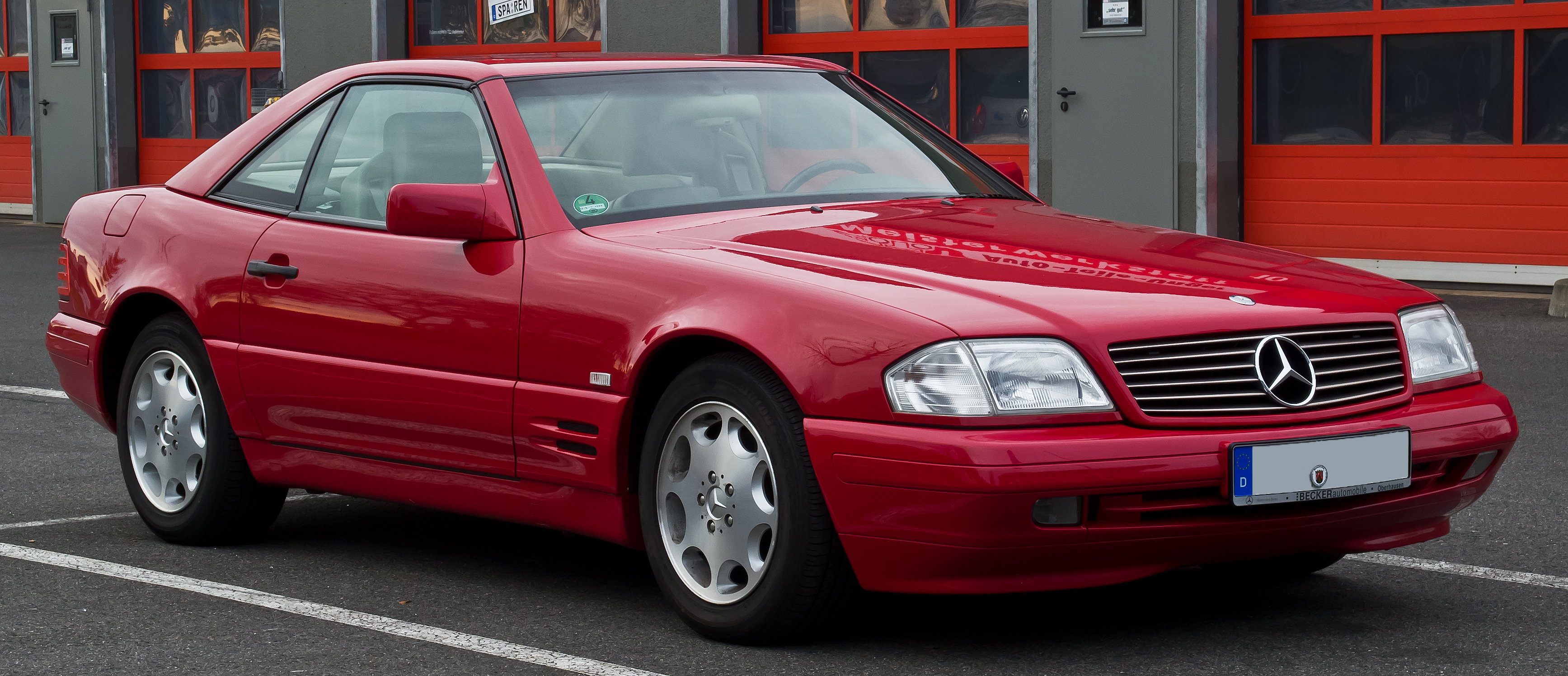
10. **Mercedes-Benz SL-Class (R129)**The Mercedes-Benz SL-Class (R129 generation) stands as a towering example of what many consider to be peak old-school Mercedes engineering—a magnificent era when engineers seemingly operated without the restrictive handcuffs of “no” and cost-cutting was an alien concept. Every facet of this car, from its vault-like build quality to the meticulously designed suspension, unequivocally screams overengineering, a quality that is remarkably evident in how gracefully and robustly these vehicles have aged over the decades. They are, quite simply, built to last.
More than just a fair-weather cruiser, the R129 SL was designed as a sophisticated, all-weather grand tourer, offering the choice of robust V8 or powerful V12 engine options that delivered effortless performance. Its design, characterized by clean lines and an understated elegance, has proven truly timeless, defying the trends that often relegate other cars to obscurity. Despite its considerable age, stepping into and driving an R129 today is a surprisingly modern experience, a testament to its advanced engineering and luxurious appointments that were decades ahead of their time.
For an extended period, the R129 remained remarkably undervalued in the secondary market, often overlooked in favor of its more flamboyant or overtly sporty contemporaries. This presented a golden opportunity for savvy collectors to acquire a piece of unparalleled German luxury and engineering prowess at an incredibly accessible price point. However, discerning enthusiasts are increasingly recognizing its merits, and this highly overbuilt and historically significant model is now poised for a significant re-evaluation of its worth, steadily earning its rightful place among true modern classics.
The R129 SL offers an unparalleled blend of stately luxury, enduring performance, and meticulous craftsmanship, making it an exceptionally compelling investment for those who appreciate understated excellence. It represents a tangible link to an era of uncompromising automotive development and is destined to be celebrated as a definitive statement of Mercedes-Benz’s engineering brilliance for generations to come.
**A Timeless Dialogue: Connecting Generations Through Automotive Passion**
As we conclude our journey through the fascinating landscape of emerging classic cars, it becomes abundantly clear that the love for automobiles transcends simple mechanics or fleeting trends. It’s a deep, abiding passion that connects generations, albeit through different lenses of nostalgia and aspiration. While baby boomers may cherish the chrome-laden giants of their youth, millennials and Gen Z are forging their own path, embracing ‘youngtimers’ that encapsulate the spirit of their formative years.
These modern classics, from the Bauhaus brilliance of the Audi TT to the overengineered luxury of the Mercedes-Benz R129, offer a unique blend of character, engaging performance, and a tangible connection to automotive history. They provide an accessible entry point into the world of collectible cars, proving that genuine enthusiast appeal isn’t limited to million-dollar auction pieces but thrives in vehicles that dared to be different and offered a truly memorable driving experience.
Read more about: Revving Up Nostalgia: 14 Vintage ’60s Cars That Are Now Every Collector’s Gold Mine for Enthusiasts
The rising interest in ‘youngtimers’ is not just a shift in the market; it’s a vibrant reaffirmation that the thrill of driving, the appreciation for design, and the joy of ownership continue to captivate new generations. It highlights a universal truth: that the perfect ride isn’t just a mode of transport, but a vessel for memories, a canvas for self-expression, and a timeless symbol of freedom on the open road. As these cars continue their ascent into full-blown classic status, they will carry forward the torch of automotive enthusiasm, ensuring the roar of an engine and the joy of the drive resonate for years to come. In essence, the definition of ‘classic’ is not shrinking, but rather, expanding to embrace new narratives and ignite new passions, celebrating the enduring legacy of the automobile in all its diverse and wonderful forms.

